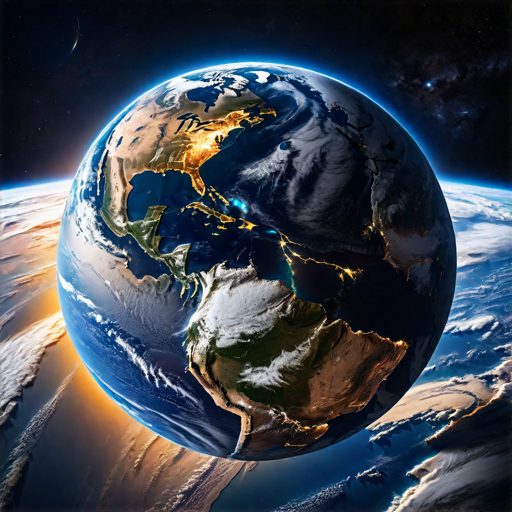
Planet Earth’s Orbit: Altered by Chance
Recommended for Preparatory Grades
Let’s chew over this for a moment – our planet Earth, right, has had a history more dramatic than anything you’d catch at the cinema. Picture this: millions of years ago, Earth’s just minding its business when, out of the cosmic blue, a rogue star comes by close enough to give us a celestial nod.
Now, Nathan Kaib and Sean Raymond, these planetary detectives, are telling us that this fleeting encounter could’ve given Earth’s orbit a nudge, enough to crank up the thermostat.
You see, Nathan Kaib, he’s hitched his wagon to the stars with the Planetary Science Institute and the University of Oklahoma. A real brainy type, involved in all that space rock business. And then there’s Sean Raymond—talk about a high-flyer—over at the National Centre for Scientific Research in France and also at the University of Bordeaux. They’re not just dabbling in stardust; they’re shaping the way we see the universe. It’s some serious stuff they’re up to, we tell you.
Earth’s Climate
So, about 56 million years back, when dinosaurs had long checked out and mammals were starting to think they owned the place, Earth suddenly turned up the heat by up to 8 °C. That’s not just a bad summer; that’s Earth turning into a sauna. And according to Kaib and Raymond’s hunch, it could well be due to our planet playing cosmic bumper cars with a passing star.
These guys ran simulations, right, and it turns out a star whizzing by can be quite the troublemaker, jostling the orbits of our solar neighborhood. Now, we know that Earth does this dance around the sun, a waltz that’s been linked to our climate wobbling over tens of thousands of years – these are the Milankovitch cycles.
But here’s the kicker – if a star like HD 7977 decides to gatecrash our Solar System, even from a distance of thousands of astronomical units away, it could have been enough to send Earth’s climate into a tizz. We’re not just talking about a few extra sunburns; we’re talking about a global heatwave that lasted thousands of years.
Cosmic Implications
Now, we like to think we’ve got the Solar System’s history down to a tee, but let’s be honest, excluding these cosmic encounters is like ignoring the elephant in the room. So these stellar flybys? They’re not just a footnote in the history of planet Earth; they’re a headline act.
And here’s the real sting in the tail – if Earth’s orbit can get shuffled by these celestial meet-and-greets, what does that say about our understanding of the planet’s past, or even its future? Well, if you ask the boffins behind this study, they’ll say we need to keep our eyes on the stars, because Earth’s next dramatic twist in the tale might just come from another stellar passerby.
